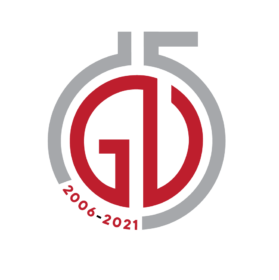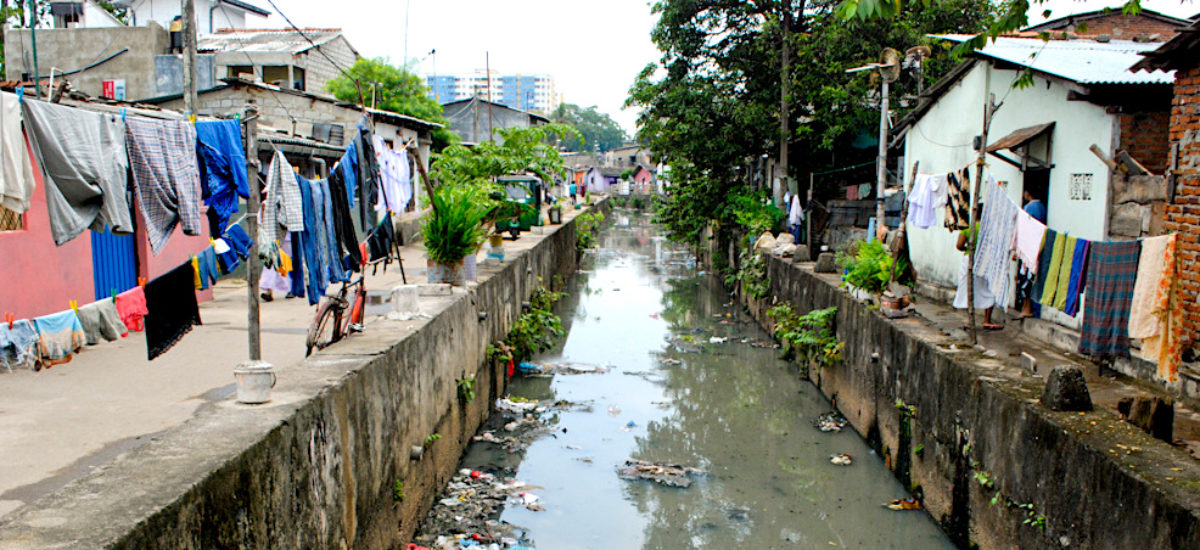Photo courtesy of MDXIPE
Sri Lanka is experiencing its worst economic crisis since independence with a rapidly declining economic growth rate coupled with widening deficits in the balance of payments, government budget and investment and savings. The real Gross Domestic Product (GDP) was reported to be -3.6 % in 2020 and 3.7 % in 2021. The GDP growth for the first half of the year 2022 is -4.8. According to the latest South Asia Economic Focus and the Sri Lankan Update, the real GDP is expected to fall by 9.2 % in 2022 and a further 4.2 percent in 2023. The volatile political situation as well as increased fiscal, external and financial sector imbalances cast significant doubt on the economic outlook. The ongoing economic crisis has impacted negatively on living conditions and is expected to increase poverty substantially in the country.
The Department of Census Statistics (DCS) estimates income poverty using the Household Income and Expenditure (HIE) Survey in every three years. DCS estimates Official Poverty Line (OPL) for each month in the country using an internationally recognized method known as the “Cost of Basic Need (CBN) Approach”. The DCS publishes official poverty statistics based on the OPL, indicating the number of people living in poverty, the poverty rate or percentage of people living below the OPL (Poverty Headcount Index), the depth and severity of poverty, the poverty shortfall, and how poverty is distributed by sectors, provinces, and districts. Although DCS conducts the HIES every three years, the survey is not being conducted this year. Therefore, there is no official information available to understand the poverty situation in the country. Meanwhile the World Bank argues that the economic recovery in 2021 was insufficient to return poverty to its pre-crisis levels. Their simulations show that the ongoing financial crisis may increase poverty to 25.6 percent in 2022, equivalent to over 2.5 million people falling into poverty between 2021 and 2022 and bringing poverty back to close to 2009 levels.
Given that there is no scientific evidence about the poverty situation in the country, a research team of the University of Peradeniya including Prof. Muditha Karurathna, Prof. Tilak Bandara, Dr. Shyamantha Subasinha and Mrs. Lakshika Wiragoda under my leadership conducted a study in this area. It estimates the poverty headcount ratio for July 2022 using the official poverty line data given by DCS. The basic methodology adopted for this study has several steps. First, we identified OPL for July 2022 which is Rs. 13,138 ($1.21 per day). This means that a family of four requires at least Rs. 52,552 per month to meet their minimum consumption requirement, which was Rs. 31,652 in 2021 (66% increase in seven months). Second, we used DCS 2019 HIE survey data as the base year. We adjusted them to the real gross domestic income change in order to capture the income change of the households until the second quarter of 2022. We also did this for various income deciles. Third, we determined the decile group cut off point using households income and OPL which represents the minimum required amount of income. The estimates taken in this way shows how many households earn less than Rs. 52,552 per month. In general, we can use either the income or expenditure approach for this purpose. However, we believe that the income approach is superior to the expenditure approach because people’s consumption – expenditure – patterns have shifted significantly in response to inflation in recent months. Furthermore, income demonstrates the households’ affordability or purchasing power.
We were able to determine the total number of households under OPL using this method. Despite the fact that the average family size of households was 3.7, evidence clearly shows that the average family size of low income groups is relatively larger than that of high income groups. As a result, we multiplied it by four to estimate the total number of people living in poverty by June 2022. To obtain the figures for the end of 2022, we used the same procedure but this time we used the World Bank’s forecasted -9.2 growth rate. Our estimates considered only the lower bound of the income groups. Therefore, this represents the lower limit of poverty in the country.
Average households’ monthly income has decreased from Rs. 76, 390 in 2021 to Rs. 72,720 by July 2022. Meantime, inflation has increased 52% between January 2022 and July 2022. During the same period food inflation has increased by 60 % while nonfood inflation has increased by 45%. The OPL has increased by 66 % during the same period. All this provide the evidence to say that steepest rise in poverty levels took place after January 2022.
When considering the decile groups (income) in the country, first and second decile groups (lowest) were under the poverty line by the end of 2021 (approximately 1.14 million households or 4.56 million individuals). Third and fourth decile groups and more than 140, 000 of the households who were in the fifth decile group has come under poverty line between January and July 2022. This implies that approximately 1.28 million households or 5.12 million individuals has come under the poverty line within this seven month period. According to the OPL people living in the households whose real per capita monthly total consumption expenditure is below Rs. 6,966 in the year 2019 are considered as living in poverty. Accordingly, 11.9 % of households were in poverty, which was 681,800 households and 3,042,300 (14.3%) individuals. Our new estimates using the income approach shows that number of households whose income level is less than OPL is approximately 2,422,500, which is 42 % of the total households in the country. This includes approximately 9,690,000 (44%) individuals.
The interim budget presented by the Minister of Finance recently has given some attention to direct cash transfer to poor households. These include providing immediate relief to around 3.2 million people affected by the current economic situation. Under this, monthly the Samurdhi allowance has been increased to an amount ranging between Rs. 5,000 to Rs. 7,500 per month for approximately 1.7 million Samurdhi receiving families. Apart from that, an assistance of Rs. 5,000 was provided per month temporarily to around 726,000 families who were in the waiting list for expecting Samurdhi benefits. The allowance paid for the elderly, disabled and kidney patients was increased to an amount ranging between Rs. 5,000 to Rs. 7,500. The temporary assistance of Rs. 5,000 will be arranged for the people who are in the waiting lists in anticipation of receiving this assistance. This is evidence that the social protection programs are progressing; however, they should be rigorously focused on the requirements of needy families. When considering the prevailing inflation, this type of small cash transfer is approximately 9 % of their minimum expenditure requirement and does not meet their minimum needs.
Our research does not provide sufficient evidence to explain the country’s poverty distribution by sector or district. However, it is clear that most low income people have reduced the number of meals they eat, shifted to low quality, low cost commodities and reduced their children’s health and education spending. We are currently conducting a school survey. Preliminary findings indicate that students’ behavior has changed dramatically (more violence, inability to concentrate and failure to complete homework). Obviously, the number of unemployed people has increased but there is insufficient evidence to support this claim quantitatively. The government recently increased both indirect and direct taxes. This has had a negative impact on the country’s middle income group as well. Rural households try to survive by gathering various items from their own backyard gardens but such opportunities do not exist in cities. As a result, households in urban areas are severely impacted by the food crisis. Children and pregnant mothers, in particular, were at high risk of nutritional deficiencies because the quantity and quality of food intake in lower income groups suffered greatly during this period.
The country is in a critical situation. Food inflation, job losses, limited fertilizer supply and a drop in remittance have disproportionately impacted poorer households. The current tax structure changes (increased direct and indirect taxes) have exacerbated the situation. It is obvious that all marginalized groups suffer greatly. More than three million fisheries families, more than one million plantation sector families and approximately 300,000 daily wage earners, for example, are direct victims of the crisis. Approximately 20% of the population lives in slums (as a percentage of the urban population). With time, this group may become more violent and resort to unethical or illegal means of earning a living.
Micro, Small and Medium Enterprises (MSMEs) accounted for more than 75% of all businesses, provided 45% of all jobs and contributed 52% of the GDP in Sri Lanka. MSME establishments numbered 1.017 million (this includes 935,000 micro enterprises and 71,000 small enterprises) and it is approximately 99.7 % of the total non-agricultural sector establishments. The MSME sector provides livelihood to nearly 2.23 million people, which is more than 75% of the total private sector employments in non-agricultural sector (DCS, 2020). This sector is severely affected by the recent tax revision, rate changes of telephone, electricity and water and inflation as well as prevailing economic crisis.
Sri Lanka must address long standing economic weaknesses within a sound macroeconomic policy framework yet to be developed. The government is currently renegotiating its debts with bilateral creditors including China and Japan and multilaterals such as the ADB and the World Bank. After establishing the IMF credit line, country is expected to stabilize its economy by lowering inflation, resolving the balance of payments and exchange rate crises and essentially putting forth a recovery plan.
The country’s political crisis has remained an impediment to the ongoing process. Certain essential measures such as improved governance and eliminating corruption are still not given proper attention. Therefore, I would expect that the situation will worsen without having a turning point in the system.


